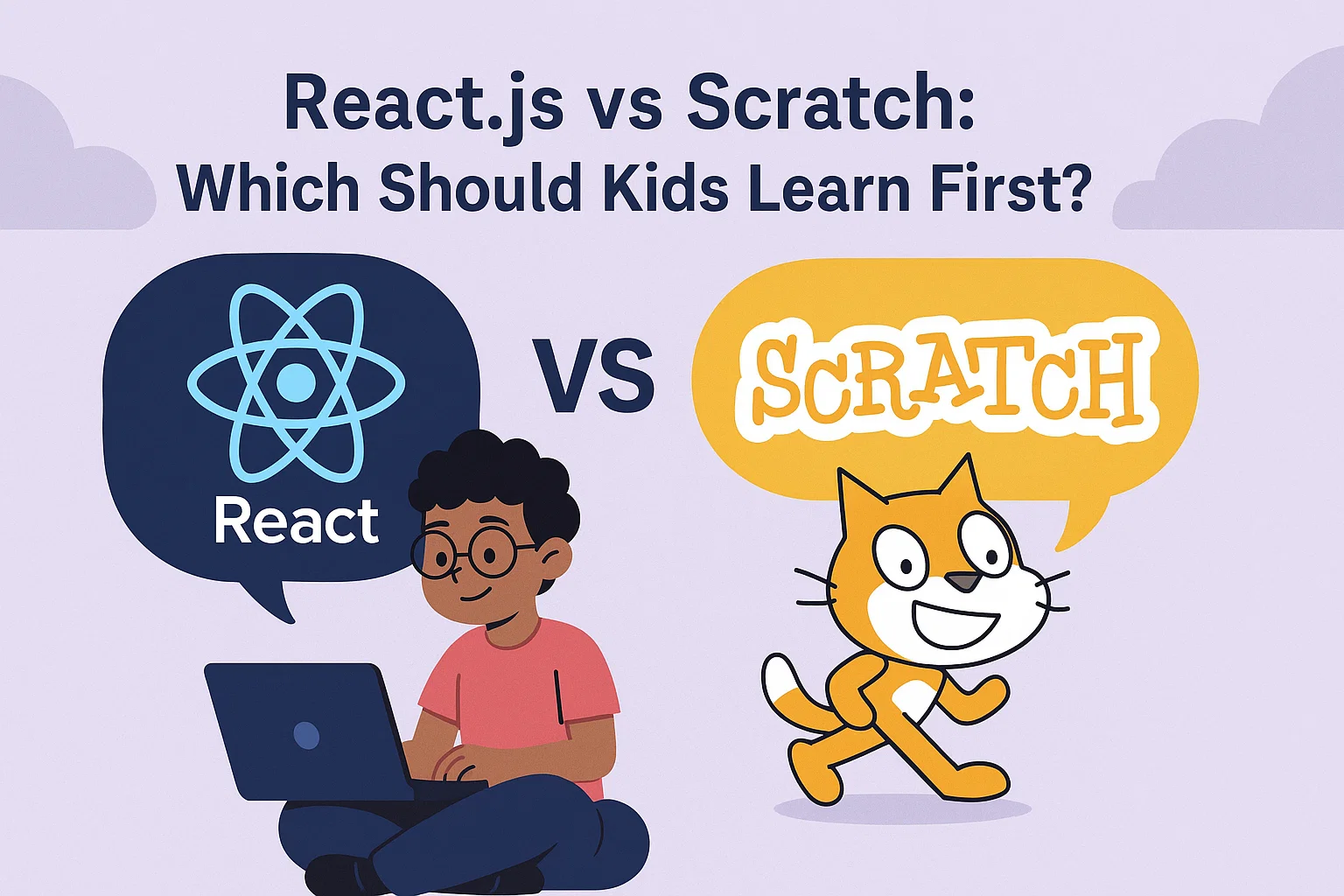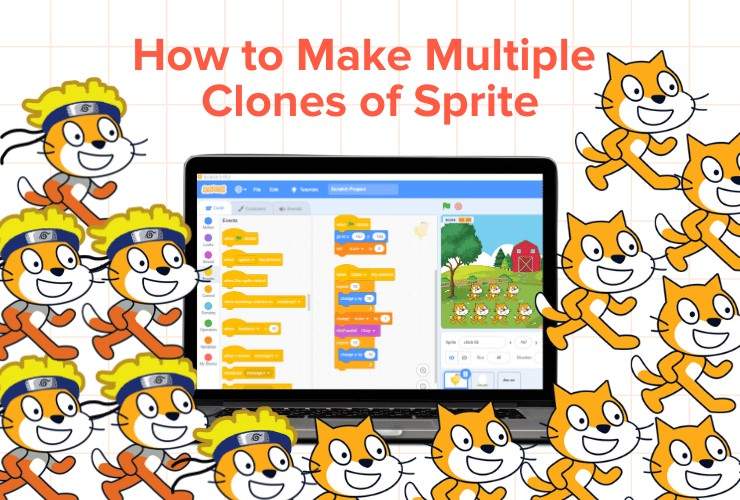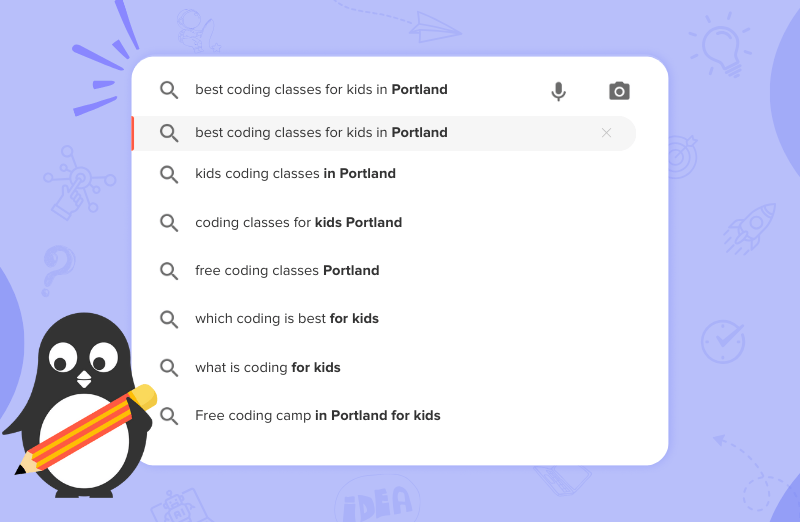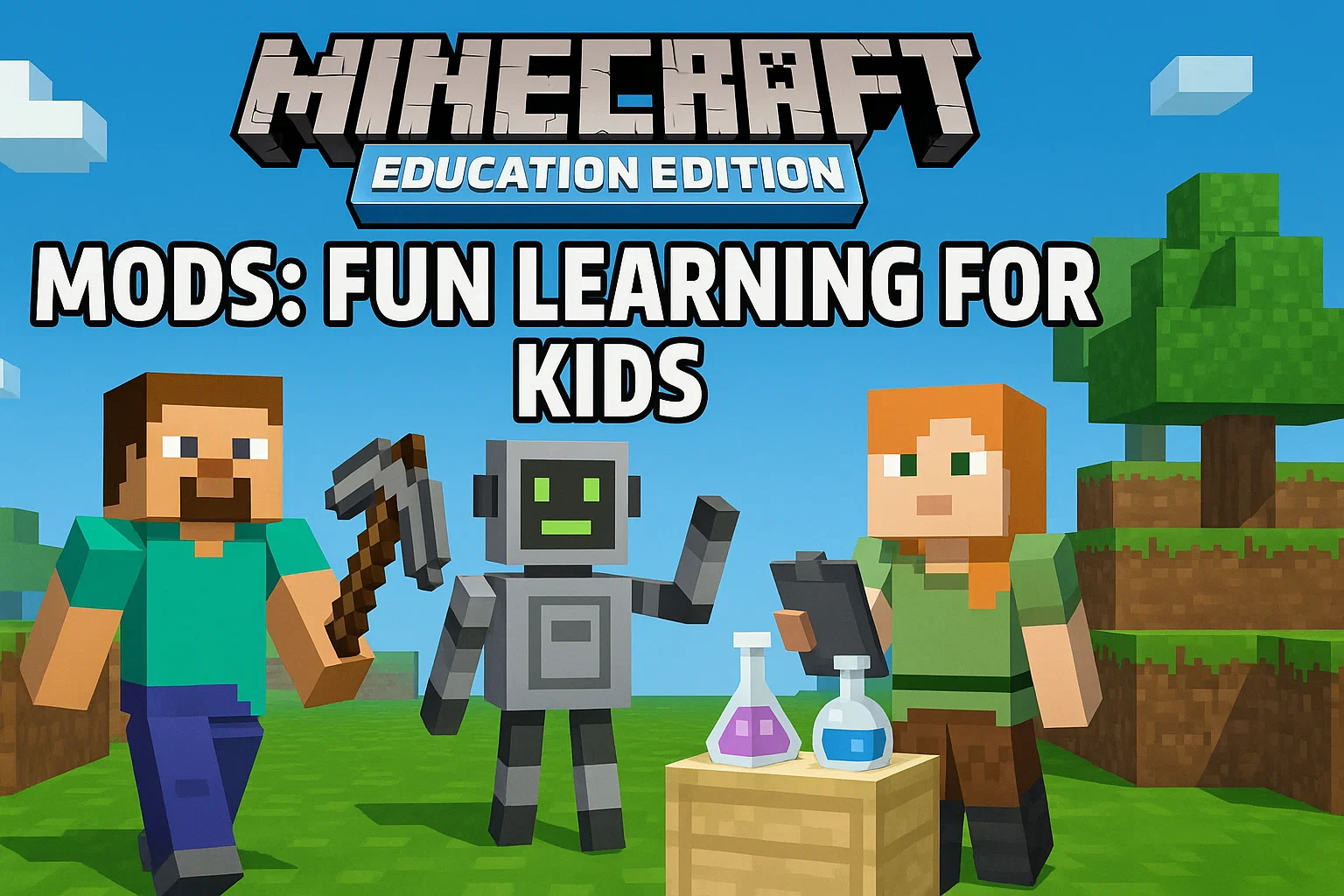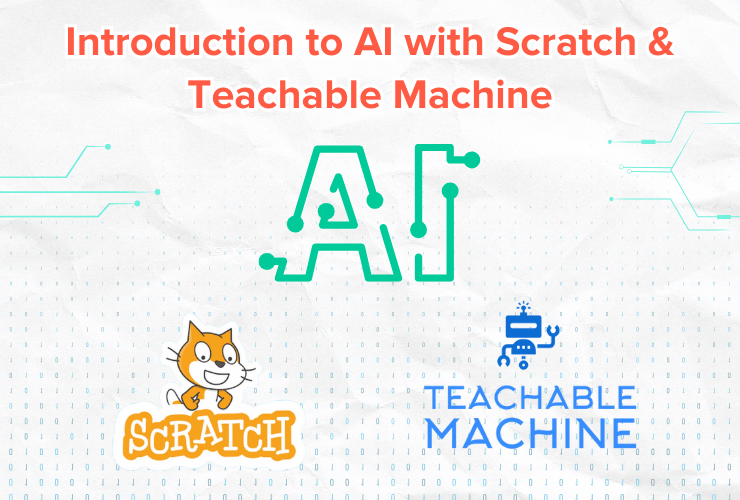Introduction
As parents, you have probably heard about coding for kids and how it helps build creativity, problem-solving, and logical thinking. But when it comes to choosing the right programming platform for your child, the options can feel overwhelming.
Two popular names often come up, Scratch and React.js. Both are incredible tools in their own right but serve very different purposes.
So, which one should your child start with? Should they jump straight into React.js, the framework behind modern web apps, or begin with Scratch, a visual coding playground for young learners?
Let’s explore both and help you make the best decision for your child’s learning journey.
What Is Scratch?
Scratch is a free, visual programming platform created by MIT (Massachusetts Institute of Technology). It uses drag-and-drop coding blocks that allow children to create interactive stories, animations, and games — without needing to type a single line of code.
Why Kids Love Scratch:
- It’s colorful, interactive, and feels like playing a game.
- Kids can see their code come to life instantly.
- There’s no syntax, no worrying about semicolons or brackets!
- It encourages creativity through art, animation, music, and storytelling.
At Codingal, Scratch is often the first step in our coding curriculum because it helps children learn core programming logic like loops, conditionals, and variables — in a visual, stress-free way.
What Kids Learn in Scratch:
- Sequencing (step-by-step logic)
- Loops and events
- Conditions (if-then logic)
- Problem-solving and debugging
- Storytelling and creativity
In short, Scratch builds the foundation every young coder needs, logic before language.
What Is React.js? The Framework Behind Modern Apps
React.js (or simply React) is a JavaScript library used by professionals to build fast, dynamic web applications. It’s behind some of the most popular websites and apps like Instagram, Netflix, and Facebook.
React helps developers build components like small pieces of a website (like buttons, menus, or dashboards) and combine them to make large applications efficiently.
Why React Is Powerful?
- It’s used in real-world, professional software development.
- Helps kids understand how interactive websites and apps are built.
- Encourages structured thinking and modular design.
- Opens doors to learning advanced technologies (like Node.js, APIs, and AI integration).
However, this is important: React.js is not designed for beginners or young kids. It requires understanding of HTML, CSS, and JavaScript before diving in.
Scratch vs React.js: The Key Differences
| Feature | Scratch | React.js |
|---|---|---|
| Recommended Age | 6–13 years | 13+ years (or advanced learners) |
| Programming Type | Block-based (visual coding) | Text-based (JavaScript) |
| Difficulty Level | Beginner-friendly | Intermediate to advanced |
| Purpose | Learn logic, problem-solving, and creativity | Build real-world web applications |
| Learning Curve | Very smooth, visual, and fun | Steeper — requires coding background |
| Output | Games, animations, and stories | Websites, dashboards, and web apps |
| Best For | Kids starting their coding journey | Teens ready for web development |
| Used At Codingal | Introductory & Intermediate courses | Advanced Web Development & AI courses |
Why Kids Should Start With Scratch
Learning to code is like learning a language. You wouldn’t hand a child a Shakespeare play before teaching them the alphabet and the same goes for coding.
Scratch helps children think like programmers before they ever type code. It allows them to experiment, make mistakes, and learn visually — building confidence step by step.
Once kids master the basics of Scratch, transitioning to JavaScript (and later React.js) feels natural. They already understand logic, events, and variables — the hardest part of programming!
At Codingal, our progression path looks like this:
Scratch → HTML/CSS → JavaScript → React.js
This ensures your child enjoys learning, builds a strong foundation, and avoids frustration that often comes with jumping into advanced frameworks too soon.
When Should Kids Learn React.js?
React.js is an excellent next step for teenagers who:
- Have already explored block coding platforms like Scratch.
- Understand the basics of HTML, CSS, and JavaScript.
- Show strong interest in web or app development.
Learning React empowers students to:
- Build fully functional websites and apps.
- Work on real-world projects (like portfolios, calculators, and blogs).
- Understand the structure of modern web technologies.
In Codingal’s Web Development and Advanced Coding courses, students explore React.js once they have a solid foundation in front-end programming — ensuring they succeed without feeling overwhelmed.
How Codingal Bridges the Gap Between Scratch and React
At Codingal, we don’t just teach coding — we teach how to think, create, and innovate.
Our structured curriculum follows a child-first progression:
- Scratch – Learn logic, storytelling, and interactivity.
- HTML & CSS – Build and style web pages.
- JavaScript – Learn text-based coding and interactivity.
- React.js – Design powerful, modern web apps.
Each level is hands-on, filled with projects, quizzes, and creativity boosters — so kids learn at their own pace while building something meaningful at every stage.
The Verdict: Scratch First, React Later
If your child is under 13 or new to coding, start with Scratch.
It’s playful, visual, and builds confidence — everything a beginner needs to fall in love with coding.
Once your child understands programming basics and is comfortable with written code, they can graduate to React.js to explore real-world web development.
Think of Scratch as learning to ride a tricycle — it builds balance and confidence.
React.js is the mountain bike — exciting, fast, and advanced, but only when they’re ready.
In Conclusion
Both Scratch and React.js are powerful learning tools — but they serve different stages in your child’s journey.
Start with Scratch to build a solid foundation in logic and creativity. Move to React.js once your child has the coding maturity to understand real-world web development.
At Codingal, we make this progression seamless with live 1:1 and group classes taught by expert instructors, tailored for every age and s
